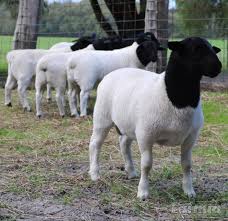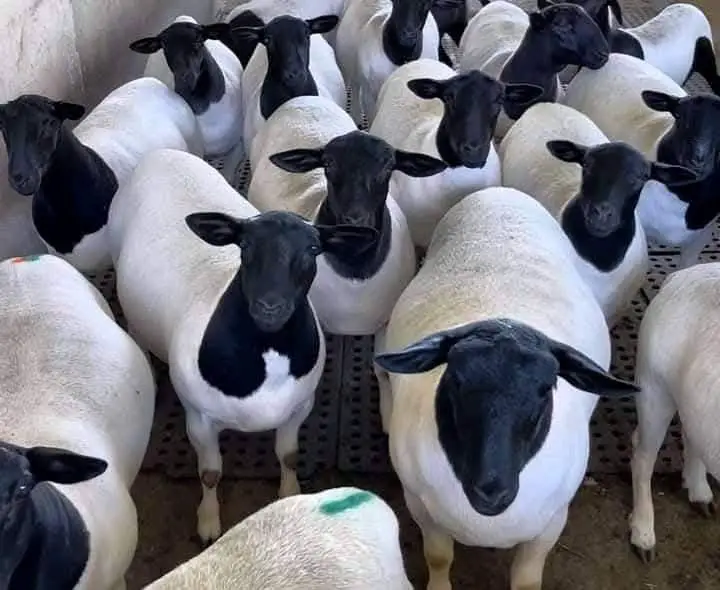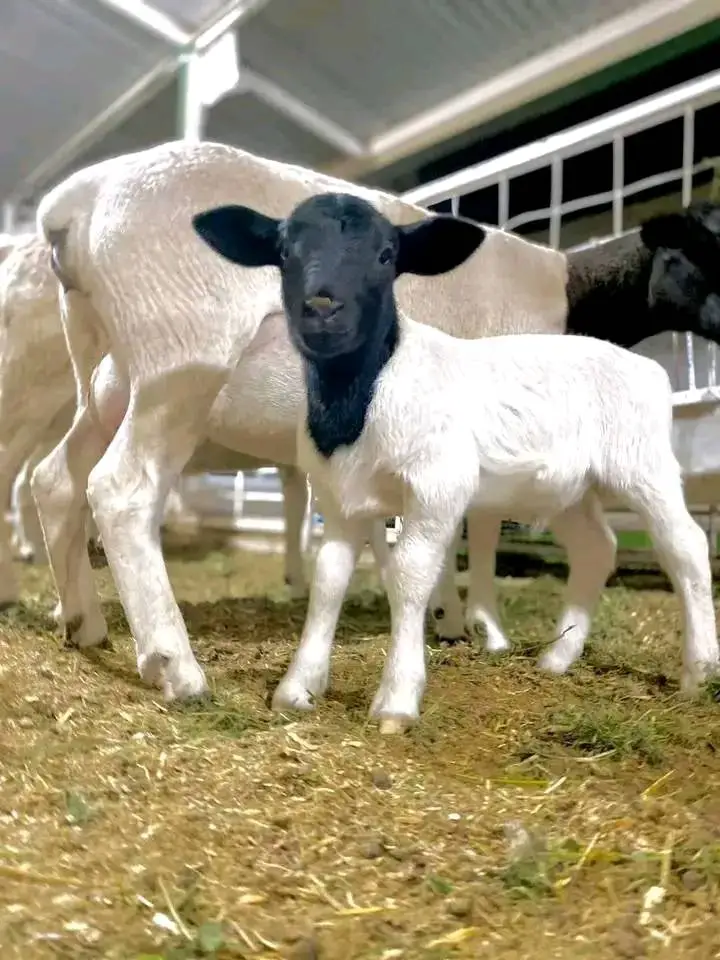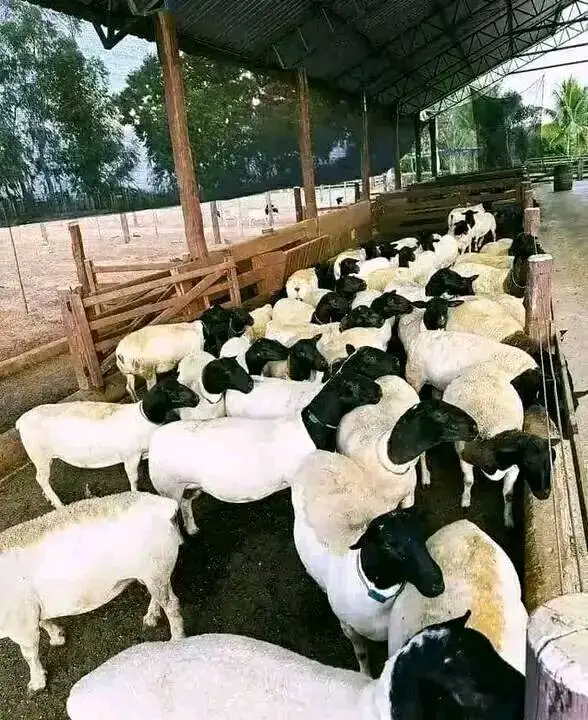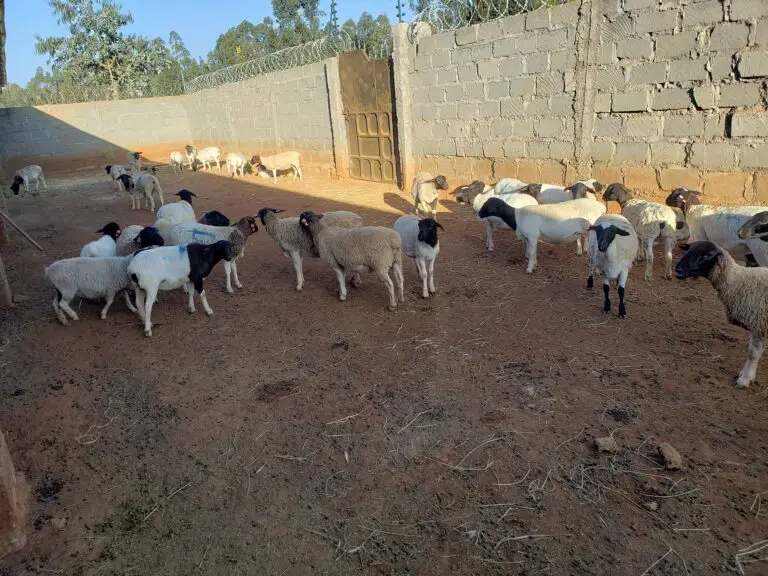Hampshire Sheep vs. Dorper Sheep Comparison
Choosing between Hampshire and Dorper sheep depends on your farming goals, climate, and market demands.
While both breeds are popular for meat production, they differ significantly in origin, adaptability, management needs, and profitability. Below’s a comprehensive comparison to guide your decision.
1. Origin and History
| Breed | Origin | Development Purpose |
|---|---|---|
| Hampshire | England (1800s) | Dual-purpose (meat and wool) |
| Dorper | South Africa (1930s) | Meat production in arid regions |
Key Insight:
- Hampshire: Bred for lush pastures and cooler climates.
- Dorper: Engineered for resilience in dry, harsh environments.
2. Physical Characteristics
| Trait | Hampshire | Dorper |
|---|---|---|
| Coat | Thick white wool, black face/legs | Hair (sheds seasonally), white body, black head (Blackhead Dorper) |
| Size | Large-framed (rams: 110–135 kg; ewes: 80–110 kg) | Medium-framed (rams: 90–120 kg; ewes: 60–90 kg) |
| Horns | Polled (hornless) | Polled |
| Adaptability | Prefers temperate climates | Thrives in arid/semi-arid regions |
3. Meat Production
| Factor | Hampshire | Dorper |
|---|---|---|
| Growth Rate | Moderate (slower than Dorper) | Rapid (lambs reach 35–40 kg in 6 months) |
| Carcass Yield | 45–50% | 50–55% |
| Meat Quality | Lean, mild flavor | Tender, well-marbled |
| Market Demand | Popular in the US/UK for lamb | High demand in Africa/Middle East |
Winner: Dorper for faster growth and higher yield; Hampshire for niche lamb markets.
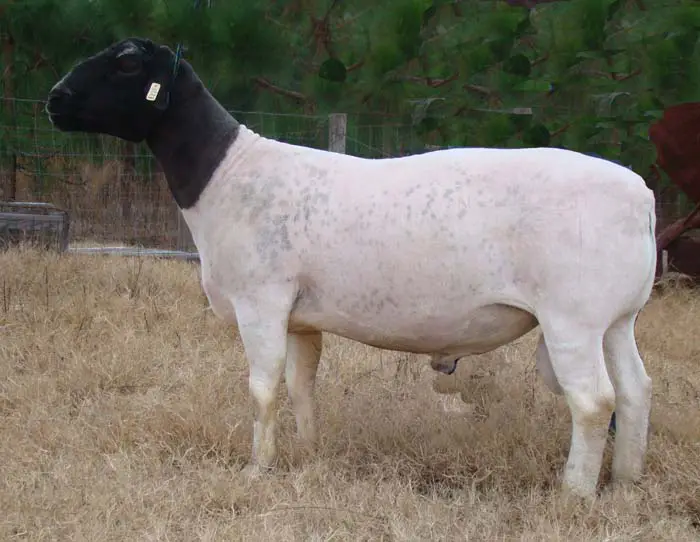
4. Wool vs. Low-Maintenance
| Breed | Fiber Use | Maintenance Needs |
|---|---|---|
| Hampshire | Medium-wool (fleece weight: 3–5 kg/year) | Annual shearing required; prone to flystrike |
| Dorper | Hair (no wool) | No shearing; low grooming |
Key Insight:
- Hampshire: Wool adds revenue but increases labor.
- Dorper: Ideal for farmers avoiding wool-related costs.
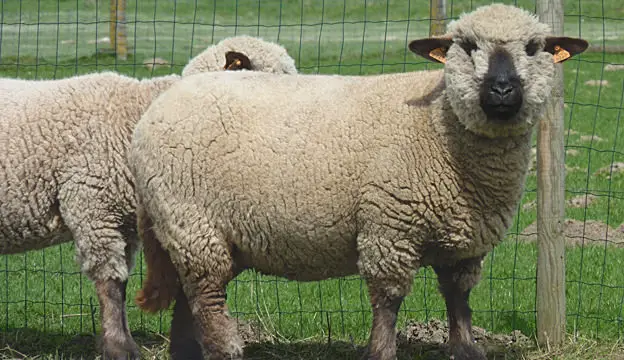
5. Reproduction and Fertility
| Factor | Hampshire | Dorper |
|---|---|---|
| Lambing Rate | 130–180% (1–2 lambs/lambing) | 150–200% (1–2 lambs/lambing) |
| Lambing Interval | Annual | 3 lambings every 2 years |
| Maternal Instinct | Moderate | Strong (ewes rarely abandon lambs) |
Winner: Dorper for higher prolificacy and year-round breeding.
6. Feed Efficiency
| Breed | Foraging Behavior | Feed Requirements |
|---|---|---|
| Hampshire | Prefers high-quality pasture | Demands better forage; struggles on sparse vegetation |
| Dorper | Excellent browsers/grazers | Thrives on low-quality scrubland; requires minimal supplements |
Key Insight: Dorpers are more cost-effective in resource-limited regions.
7. Disease Resistance
| Breed | Common Health Issues | Resilience |
|---|---|---|
| Hampshire | Susceptible to foot rot, internal parasites | Moderate; requires regular deworming |
| Dorper | Highly resistant to parasites | Exceptional hardiness; low veterinary costs |
Winner: Dorper for lower healthcare demands.
8. Climate Suitability
| Breed | Ideal Climate | Challenges |
|---|---|---|
| Hampshire | Temperate (e.g., UK, US Pacific Northwest) | Heat stress in hot climates |
| Dorper | Arid/semi-arid (e.g., Kenya, Australia) | Poor performance in cold, wet regions |
9. Economic Viability
| Factor | Hampshire | Dorper |
|---|---|---|
| Initial Cost | Ewe: 250–250–500; Ram: 500–500–1,500 | Ewe: 150–150–300; Ram: 400–400–1,200 |
| Feed Costs | Higher (quality pasture needed) | Lower (forage-efficient) |
| Revenue Streams | Meat, wool | Meat, breeding stock |
| Profit Potential | Moderate (US/UK markets) | High (African/Middle East markets) |
10. Pros and Cons Summary
| Breed | Pros | Cons |
|---|---|---|
| Hampshire | Dual-purpose (meat/wool), good carcass quality | High maintenance, climate-sensitive, slower growth |
| Dorper | Low-maintenance, drought-hardy, fast-growing | No wool revenue, less cold-tolerant |
11. Which Should You Choose?
- Choose Hampshire If:
- You’re in a temperate climate with good pasture.
- You want wool as a secondary income.
- Targeting premium lamb markets (e.g., organic, grass-fed).
- Choose Dorper If:
- You’re in a hot, dry region (e.g., Kenya, Australia).
- You prioritize low-input, high-output meat production.
- Your market prefers tender, fast-growing mutton.
12. Case Studies
- Kenya: Dorpers dominate due to drought resilience; a 50-ewe flock yields 75 lambs/year (KES 750,000 revenue).
- United States: Hampshires thrive in Ohio and Oregon, selling lambs at 200–200–400 for specialty markets.
13. Hybrid Options
Crossbreeding Dorper rams with Hampshire ewes can combine growth rates and wool quality, but hybrids may lack consistency.
Final Verdict:
For arid regions and meat-focused farms, Dorpers are unbeatable. For temperate climates with dual-purpose goals, Hampshires hold value. Assess your environment, labor capacity, and market access to decide!
Data sources: USDA, Kenya Agricultural and Livestock Research Organization (KALRO), Dorper Sheep Society.
